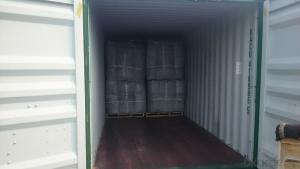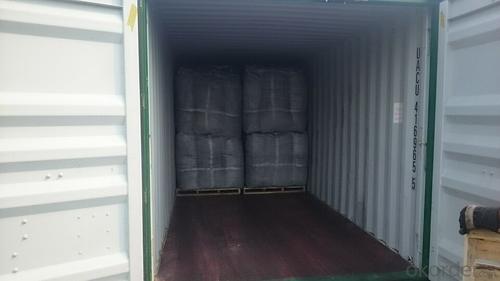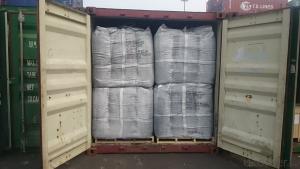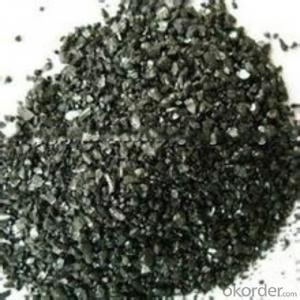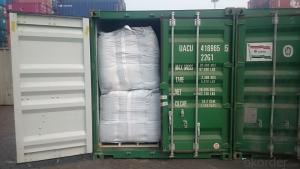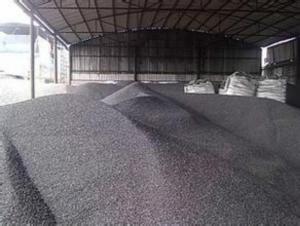GPC with lower Sulphur0.03% max in Low Moisture
- Loading Port:
- Tianjin
- Payment Terms:
- TT OR LC
- Min Order Qty:
- 21 m.t.
- Supply Capability:
- 5000 m.t./month
OKorder Service Pledge
OKorder Financial Service
You Might Also Like
Introduction:
GPC has good characteristics with low ash, low resistivity, low sulphur, high carbon and high density. It is the best material for high quality carbon products. It is used as carbon additive in steel industry or fuel.
Features:
1.Our strong team provide you reliable service that make you feel purchasing is more easier
2. We ensure that we can supply capability with competitive price.
3. Work strictly to guarantee product quality,
4. Highest standard of integrity. Guarantee customer's benefit.
5. Supplying Pet Coke, Met coke, Foundry Coke, Carbon Raiser etc.
Specifications:
F.C.% | 95MIN | 94MIN | 93MIN | 92MIN | 90MIN | 85MIN | 84MIN |
ASH % | 4MAX | 5MAX | 6 MAX | 6.5MAX | 8.5MAX | 12MAX | 13MAX |
V.M.% | 1 MAX | 1MAX | 1.0MAX | 1.5MAX | 1.5MAX | 3 MAX | 3 MAX |
SULFUR % | 0.3MAX | 0.3MAX | 0.3MAX | 0.35MAX | 0.35MAX | 0.5MAX | 0.5MAX |
MOISTURE % | 0.5MAX | 0.5MAX | 0.5MAX | 0.5MAX | 0.5MAX | 1MAX | 1MAX |
Pictures
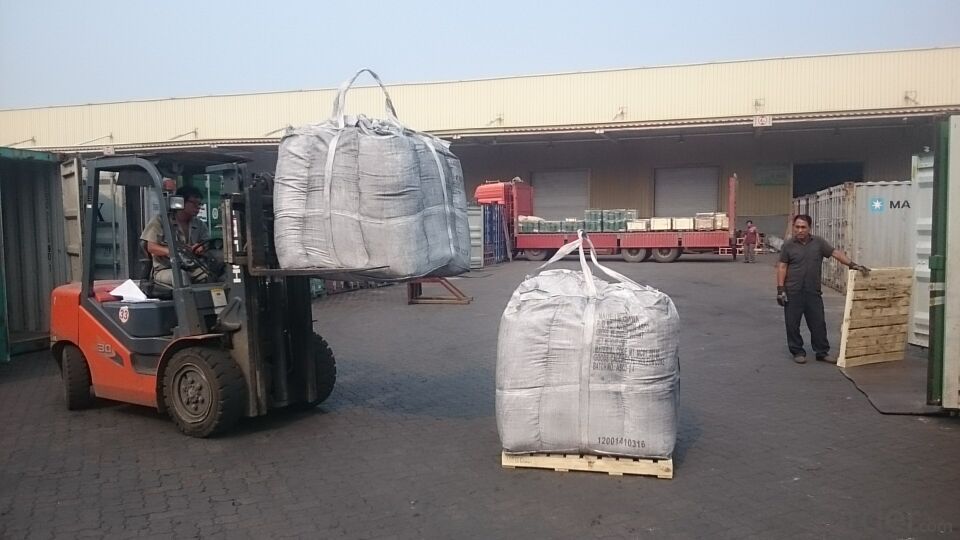
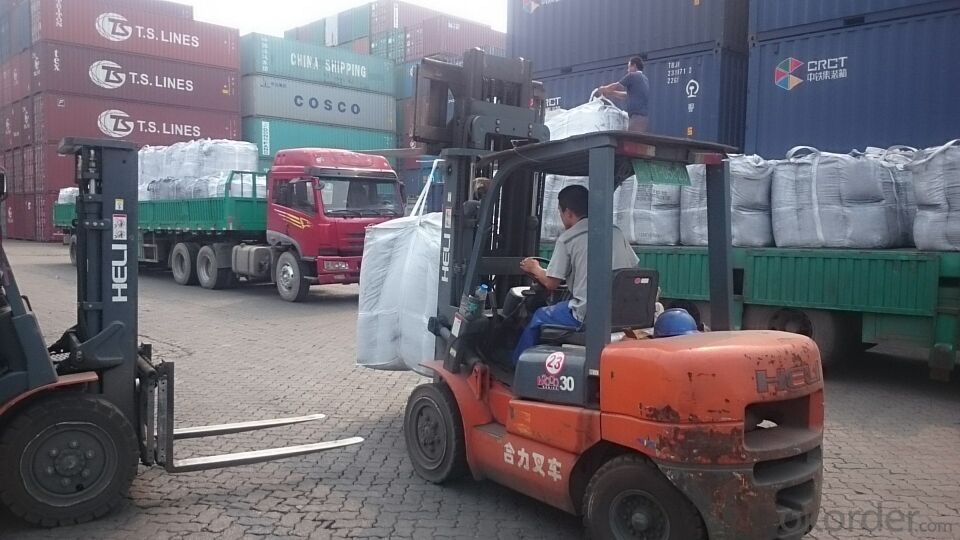
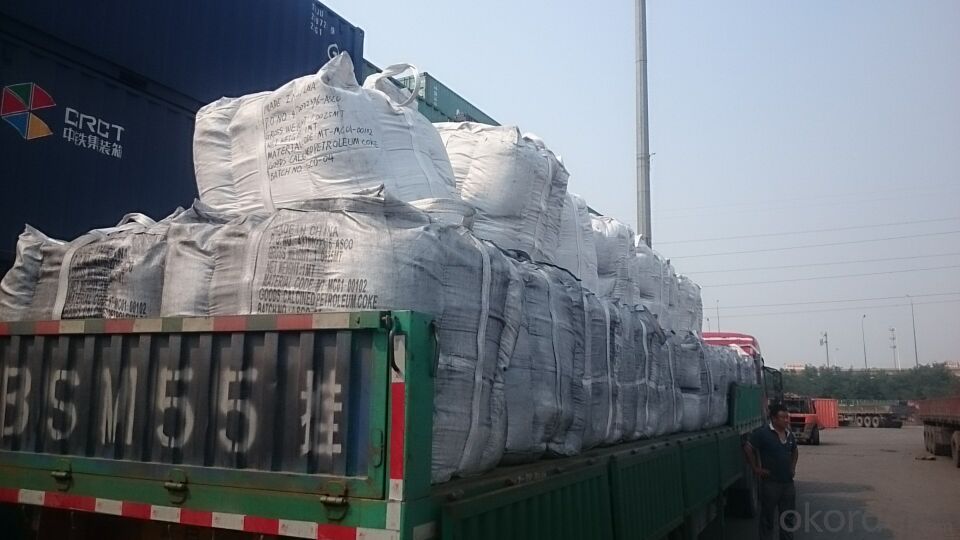
FAQ:
1. Your specification is not very suitable for us.
Please offer us specific indicators by TM or email. We will give you feedback as soon as possible.
2. When can I get the price?
We usually quote within 24 hours after getting your detailed requirements, like size, quantity etc. .
If it is an urgent order, you can call us directly.
3. Do you provide samples?
Yes, samples are available for you to check our quality.
Samples delivery time will be about 3-10 days.
4. What about the lead time for mass product?
The lead time is based on the quantity, about 7-15 days. For graphite product, apply Dual-use items license need about 15-20 working days.
5. What is your terms of delivery?
We accept FOB, CFR, CIF, EXW, etc. You can choose the most convenient way for you. Besides that,
we can also shipping by Air and Express.
6. Product packaging?
We are packed in bulk ship or in ton bag or placing in container or according to your requirements.
7. Notice
please note that the price on Alibaba is a rough price. The actual price will depends on raw materials, exchange rate wage and your order quantity .Hope to cooperation with you, thanks !
- Q: What are the impacts of carbon emissions on the stability of mountains?
- Mountains are significantly affected by carbon emissions, which have various negative consequences on their stability. One major impact is the acceleration of global warming, resulting in the rapid melting of glaciers and permafrost. Since mountains house numerous glaciers, the rising temperatures cause them to melt at an alarming rate. This melting process can lead to mountain destabilization, increasing the occurrence of landslides and rockfalls. In addition, carbon emissions also contribute to the acidification of rainwater. This acid rain can erode rocks and soil in mountains, weakening their stability. Consequently, this erosion can cause slope instability, making mountains more prone to landslides and other forms of mass movements. Furthermore, carbon emissions play a role in altering precipitation patterns. Mountain ecosystems heavily rely on a delicate balance of rainfall and snowfall. However, the impact of climate change, caused by carbon emissions, disrupts this balance and results in changed precipitation patterns. Consequently, this alteration can lead to increased water runoff and a decrease in snowpack, both of which contribute to mountain destabilization. Moreover, the indirect impacts of carbon emissions on mountain stability can be seen through changes in vegetation patterns. With rising temperatures, plant species tend to migrate to higher altitudes in search of cooler climates. This migration can result in the loss of vegetation in lower elevation areas, which are crucial in stabilizing slopes and preventing erosion. The absence of vegetation cover leads to increased soil erosion, making mountains more vulnerable to landslides and other erosive processes. In conclusion, carbon emissions have severe consequences on the stability of mountains. The acceleration of global warming, acidification of rainwater, altered precipitation patterns, and changes in vegetation patterns all contribute to the destabilization of mountains. It is vital to reduce carbon emissions and mitigate climate change to protect and preserve these majestic natural formations.
- Q: What are carbon offsets?
- Carbon offsets are a way to compensate for greenhouse gas emissions by supporting projects that reduce or remove carbon dioxide from the atmosphere, such as reforestation or renewable energy initiatives. They essentially enable individuals or organizations to balance out their carbon footprint by investing in activities that counteract their own emissions.
- Q: What are the advantages of carbon-based nanoelectronics?
- Several advantages are offered by carbon-based nanoelectronics in comparison to traditional silicon-based electronics. To begin with, exceptional electrical properties are possessed by carbon-based materials such as nanotubes and graphene. They exhibit high electron mobility, enabling them to transport charges at a significantly faster speed than silicon. As a result, electronic devices can operate more efficiently and with increased speed. In addition, excellent thermal properties are exhibited by carbon-based nanoelectronics. They possess the ability to efficiently dissipate heat, thereby reducing the risk of electronic devices overheating. This advantage is particularly beneficial for high-power applications where effective heat management is of utmost importance. Furthermore, carbon-based nanoelectronics have the remarkable characteristic of being extremely thin and flexible. Nanotubes and graphene can be easily manipulated to create electronic components that are ultra-thin and flexible. This allows for the development of innovative devices such as wearable electronics and flexible displays, which were previously unattainable using silicon-based technology. Carbon-based materials also possess a higher mechanical strength in comparison to silicon. They exhibit greater resistance to bending and breaking, resulting in increased durability and longevity. Moreover, carbon-based nanoelectronics hold the potential for scalability. They can be fabricated using various methods such as chemical vapor deposition and solution-based processes, which offer the possibility of large-scale production at lower costs. Lastly, carbon-based nanoelectronics are environmentally friendly. Carbon is a widely available element and does not pose the same environmental concerns as silicon, which requires energy-intensive processes for extraction and purification. In conclusion, carbon-based nanoelectronics offer improved electrical and thermal properties, flexibility, scalability, durability, and environmental sustainability. These advantages make them highly promising for the development of next-generation electronic devices.
- Q: What is the greenhouse effect?
- Certain gases in the Earth's atmosphere naturally trap heat from the sun, preventing it from escaping back into space. These gases, like carbon dioxide (CO2), methane (CH4), and water vapor, act as a blanket, allowing sunlight to pass through but trapping the heat radiated from the Earth's surface. This process is vital for the Earth's survival as it helps maintain a relatively stable and livable temperature range. Without the greenhouse effect, the Earth's average temperature would be much colder, rendering it uninhabitable for most forms of life. However, human activities such as burning fossil fuels, deforestation, and industrial processes have significantly increased the concentration of greenhouse gases in the atmosphere. This excessive amount of greenhouse gases intensifies the greenhouse effect, leading to global warming. Global warming refers to the gradual increase in the Earth's average temperature, primarily caused by human-induced emissions of greenhouse gases. This temperature rise has far-reaching consequences, including the melting of ice caps, rising sea levels, extreme weather events, and disruption of ecosystems. While the greenhouse effect itself is a natural and necessary process, the enhanced greenhouse effect resulting from human activities contributes to climate change. Therefore, it is crucial to reduce greenhouse gas emissions and adopt sustainable practices to mitigate the adverse effects of global warming.
- Q: What are the consequences of increased carbon emissions on coastal regions?
- Increased carbon emissions have significant consequences on coastal regions. One of the most notable impacts is sea-level rise, caused by the warming of the planet and the subsequent melting of glaciers and ice sheets. This rise in sea levels can lead to coastal erosion, flooding, and the loss of coastal habitats. Additionally, carbon emissions contribute to ocean acidification, which harms marine life and coral reefs. The combination of these effects poses a threat to coastal communities, economies, and ecosystems, highlighting the urgent need for global action to reduce carbon emissions and mitigate the consequences.
- Q: How is carbon used in the agricultural industry?
- Various purposes in the agricultural industry make carbon widely used. One of its main uses in agriculture is as a soil amendment. The addition of carbon-rich organic matter, like compost or manure, improves soil structure, fertility, and overall health. This occurs because carbon increases the soil's capacity to retain moisture, nutrients, and beneficial microorganisms, all of which are vital for plant growth. In addition to soil amendment, carbon is also utilized in the form of carbon dioxide (CO2) for greenhouse enrichment. In controlled environments such as greenhouses, plants require higher concentrations of CO2 to enhance growth and productivity. Carbon dioxide is introduced into the greenhouse to maintain optimal levels, facilitating photosynthesis and accelerating plant growth. Furthermore, carbon-based fertilizers are commonly employed in agriculture. Fertilizers like urea or ammonium nitrate provide essential nutrients to crops and enhance productivity. Carbon serves as a crucial component in these fertilizers, aiding in the controlled release and effective uptake of nutrients by plants. Moreover, carbon is employed in the production of pesticides and herbicides. Many of these agricultural chemicals contain carbon compounds specifically designed to target and control pests, diseases, and weeds that can harm crops. Carbon-based chemicals are preferred due to their effectiveness and ability to naturally break down without causing long-term harm to the environment. In summary, carbon plays a vital role in the agricultural industry by enhancing soil fertility, promoting plant growth, and aiding in pest control. Its versatility makes it an indispensable resource for sustainable and efficient farming practices.
- Q: How does carbon affect the formation of wildfires?
- Carbon does not directly affect the formation of wildfires, but it plays a crucial role in their severity and intensity. Carbon-rich vegetation, such as dry grasses and dead trees, acts as fuel for wildfires, enabling them to spread rapidly and intensify. When these fuels ignite, they release carbon dioxide, a greenhouse gas that contributes to climate change. Additionally, the combustion of carbon-rich materials during wildfires releases large amounts of carbon into the atmosphere, further exacerbating global warming.
- Q: How does carbon impact the energy balance of the Earth?
- Carbon impacts the energy balance of the Earth by trapping heat in the atmosphere through the greenhouse effect. This leads to an increase in global temperatures, known as global warming, and disrupts the natural equilibrium of energy flow on the planet.
- Q: What are the applications of graphite in industry?
- Graphite possesses distinct properties that make it suitable for a range of applications across industries. Here are several key uses of graphite in different industrial sectors: 1. Lubricants: Given its low friction coefficient, graphite is extensively employed as a solid lubricant in industries that encounter high temperatures and extreme pressures, like automotive, aerospace, and heavy machinery. 2. Refractories: Graphite's exceptional heat and chemical resistance make it an ideal material for manufacturing refractory products. It helps line furnaces, crucibles, and other high-temperature equipment in metal production, glass manufacturing, and chemical processing. 3. Electrical industry: Graphite's excellent electrical conductivity makes it widely utilized in this sector. It is employed to produce electrodes, brushes, and contacts for electrical motors, generators, and batteries. Furthermore, graphite serves as a component in electrical discharge machining (EDM) and conductive paints and coatings. 4. Foundry industry: Graphite acts as a mold and core material in the foundry industry, owing to its high thermal conductivity and ability to withstand high temperatures. It finds application in various metal casting processes, including sand casting, investment casting, and continuous casting. 5. Chemical industry: The chemical industry benefits from graphite's corrosion resistance and capacity to endure high temperatures. It is utilized in the manufacture of chemical equipment such as heat exchangers, reactors, and pipes, where it can withstand aggressive chemical environments. 6. Nuclear industry: In the nuclear industry, graphite serves as a moderator in nuclear reactors. Its ability to slow down neutrons allows for controlled nuclear fission reactions. Additionally, graphite is employed as a structural material in certain types of nuclear reactors. 7. Composite materials: Graphite is frequently used as a reinforcement material in the production of composite materials. By combining graphite fibers or sheets with resins or metals, lightweight and high-strength composites are created for applications in aerospace, automotive, and sporting goods industries. In conclusion, graphite's unique properties, encompassing high thermal and electrical conductivity, lubricity, and chemical inertness, contribute to its versatility as a material with diverse applications across industries.
- Q: What are the main sources of carbon on Earth?
- The main sources of carbon on Earth are both natural and anthropogenic (caused by human activity). In terms of natural sources, carbon is present in the Earth's atmosphere in the form of carbon dioxide (CO2), which is released through natural processes such as volcanic eruptions, respiration by plants and animals, and the decay of organic matter. Carbon is also found in the Earth's lithosphere in the form of carbonate rocks, such as limestone and dolomite, which are formed from the shells and skeletons of marine organisms. Anthropogenic sources of carbon are primarily associated with the burning of fossil fuels, such as coal, oil, and natural gas, for energy production and transportation. When these fossil fuels are burned, carbon dioxide is released into the atmosphere, contributing to the greenhouse effect and climate change. Deforestation and land-use changes also release carbon stored in trees and vegetation into the atmosphere. Additionally, human activities like industrial processes, cement production, and waste management contribute to the emission of carbon dioxide and other greenhouse gases. These activities release carbon that has been locked away for millions of years, significantly altering the natural carbon cycle. Overall, while carbon is naturally present on Earth, human activities have significantly increased its release into the atmosphere, leading to concerns about climate change and the need for sustainable practices to reduce carbon emissions.
Send your message to us
GPC with lower Sulphur0.03% max in Low Moisture
- Loading Port:
- Tianjin
- Payment Terms:
- TT OR LC
- Min Order Qty:
- 21 m.t.
- Supply Capability:
- 5000 m.t./month
OKorder Service Pledge
OKorder Financial Service
Similar products
Hot products
Hot Searches
